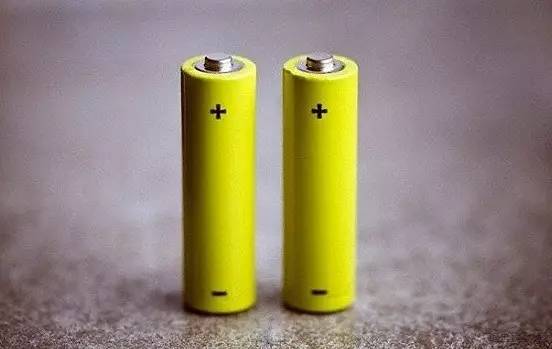Lithium titanate batteries have high safety, large magnification charge, long cycle life advantages, but with lithium titanate to do the negative, the battery charge and discharge cycle in the process of serious flatulence phenomenon, more serious at high temperatures. Although the research on flatulence of lithium titanate battery has never stopped, including carbon coating modification, hybridization, nanometer and so on, but its flatulence problem has not been completely solved, hindering the market speed of lithium titanate battery.

Flatulence mechanism of lithium titanate battery
The reason for the fact that lithium titanate / NCM battery flatness is greater than that of graphite / NCM is that lithium titanate does not form a SEI film on its surface, like a graphite negative electrode system, to inhibit its reaction with the electrolyte. In the process of charging and discharging, the electrolyte is always in direct contact with the surface of Li4Ti5O12, which causes the electrolyte to continue to decompose on the surface of Li4Ti5O12. This may be the root cause of Li4Ti5O12 battery flatulence.
The main components of the gas are H2, CO2, CO, CH4, C2H6, C2H4, C3H8 and so on. When the lithium titanate is immersed in the electrolyte alone, only the CO2 is produced. After the preparation of the battery with the NCM material, the generated gases include H2, CO2, CO and a small amount of gaseous hydrocarbons, and after the battery is made, Charge and discharge, will produce H2, while the resulting gas, H2 content of more than 50%. This indicates that H2 and CO gases will be produced during charge and discharge.
LiPF6 in the electrolyte there is the following balance: PF5 is a very strong acid, easily lead to carbonate decomposition, and the amount of PF5 with the temperature increase. PF5 contributes to the decomposition of the electrolyte, resulting in CO2, CO and CxHy gases. According to the relevant research H2 produced from the electrolyte in the trace water, but the general water content of the electrolyte is about 20 × 10-6, the contribution of H2 production is very low. Shanghai Jiaotong University, Wu Kai's experiment using graphite / NCM111 do the battery, the conclusion is that the source of H2 is the decomposition of carbonates at high voltage.
Lithium titanate battery flatulence suppression
At present, there are three main solutions to suppress the flatulence of lithium titanate battery. First, the processing modification of LTO anode material, including improved preparation method and surface modification, etc .; Second, the development of electrolyte with LTO negative electrode, including additives , Solvent system; third, to improve the battery technology.
(1) to improve the purity of raw materials, to avoid the introduction of impurities in the manufacturing process. Impurity particles not only catalyze the classification of the electrolyte to produce gas, but also will greatly reduce the performance of lithium batteries, cycle life and safety, it is necessary to minimize the introduction of impurities in the battery.
(2) lithium titanate surface covered with nano-carbon particles. Negative LTO Formation of the gas is apparent due to the formation of SEI film slower, less, resulting in flatulence phenomenon associated with its life. It was found that a barrier layer (such as a solid electrolyte interface (SEI) film formed on a surface of lithium titanate (LTO / C) and a co-cladding layer was formed between the lithium titanate and the electrolyte interface The area reduces the contact area of the LTO material with the electrolyte, preventing the generation of gas.
On the other hand, carbon itself can produce SEI film to make up for the lack of LTO, while also enhancing the conductivity of LTO materials. The above research results are of great significance to solve the gas production behavior of lithium titanate batteries, which can promote the application and development of high energy lithium titanate battery.
(3) to improve the functionality of the electrolyte. For the development of new electrolytes, many patents tend to use additives to promote the formation of dense SEI film on the surface of LTO, to inhibit LTO and electrolyte interface side effects occur. Certain electrolyte additives, such as fluorinated carbonates and phosphates, facilitate the formation of a stable SEI film on the surface of the positive electrode, reducing the dissolution of metal ions on the surface of the positive electrode, thereby reducing the generation of gas.
The film-forming additive can also inhibit the production of gas, and the addition film-forming additives include lithium borate, succinonitrile or adiponitrile, compounds of the formula R-CO-CH = N2 (wherein R is a C1-C8 alkyl group or a phenyl group ), Cyclic phosphates, phenyl derivatives, phenylethylene derivatives, LiF additives, etc. These film-forming additives are favorable for the formation of SEI film on the surface of LTO, to some extent inhibit the occurrence of flatulence.
(4) positive surface coating. The stabilization of the compound on the surface of the positive electrode, such as alumina, can effectively inhibit the dissolution of the metal ions. But too complex coating will inhibit the lithium ion de-embedding, affecting the electrochemical properties of materials.
(5) to improve the battery production process. Battery production, to control the environmental humidity, the introduction of water during the operation and so on. From the reasons for the gas can be seen, the water will react with the cathode material to form lithium carbonate and accelerate the decomposition of the electrolyte to generate carbon dioxide. In addition, the lithium titanate material itself has a strong water absorption (need to operate in the dry room), the negative pole will absorb moisture and electrolytic solution can be generated by the PF5 reaction generated H2, so strict moisture control is essential The
















 RCCN WeChat QrCode
RCCN WeChat QrCode Mobile WebSite
Mobile WebSite